(Gerry Furth-Sides) Navratna Korma at Delhi Belly lives up to his name, “nine gems,” so beautifully that it could convince you to go vegetarian. The northern classic named after the special body of nine courtiers for whom the dish was named in the 16th century was, in fact, intended to please vegetarian Hindu royals. In this way it follows the history of Charlotte Russe, Peach Melba and and other dishes created in a famous kitchen for a celebrity or royal that then made its way down to home cooks. (please see our story on it: //localfoodeater.com/sharlotka-iconic-caremes-royal-gift-to-homemakers/)
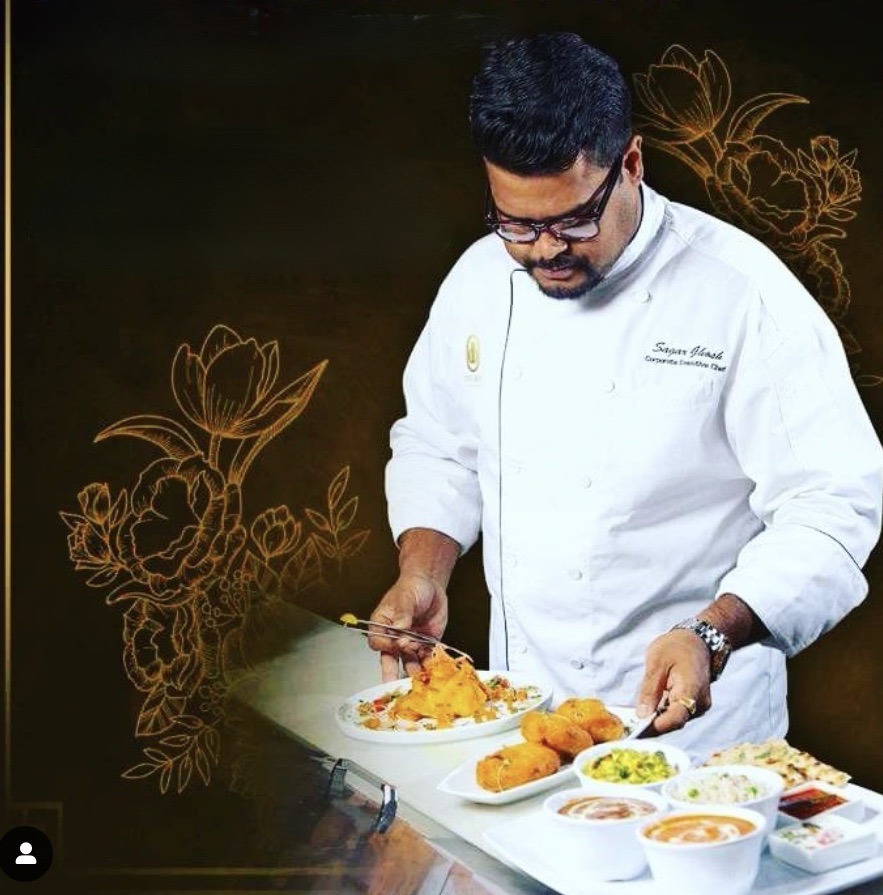
Korma, in fact, appeals to all taste palates, because it can easily range from mild to medium-hot for a family-friendly dish. And it can made with protein as well. At Delhi Belly, you have the choice because each of the elevated Indian dishes prepared individually for guests in the open kitchen headed up by Executive Chef-Partner, Sourav Biswas.
Ingredients can be mildly spiced or fiery and choices include lamb, goat meat, chicken, beef or game. Variations include meat and vegetable combinations, especially s such as spinach and trump.
They are cooked in a delicate sauce made with onions and fragrant whole spices such as cinnamon, cardamom, and cloves. The technique of braising the meat or vegetables with yogurt or stock is key and what makes this dish so special. The yogurt has to be kept below curdling temperature and incorporated slowly and carefully with the meat juices. Originally, a pot set over a very low fire was used, with charcoal on the lid to provide all-round heat.
Now I understand why my well-traveled art professor friend, @Annettakapon, always asks for “korma” at Indian restaurants. She first tasted it in London, a city known for its sophisticated variety of Indian places to eat. She notes that its her favorite primarily because it it usually served “mild” but also “tastes buttery, fatty and rich with cashews in the sauce. I love it with chicken off the bone and a mountain of white rice! …. heaven! And no wonder it was politically incorrect for awhile when the fashion was no carbs, no fat!”
Korma is features nine prime ingredients, a mix of vegetables, nuts and fruits with yogurt, cream, nuts and seeds paste or a coconut base. Its reputation as a lush creamy and delicious curry being prepared in cashew gravy results in a hint of sweetness in the savory delicacy. The refined sauce is usually made with onion, garlic, ginger and cashew seeds. Some cooks even use poppy seeds and melon seeds for a an added flavor punch that adds to the creaminess.
Being exceptional food connoisseurs, the Mughals were always looking for their own unique, cutting edge dishes. The backstory is that the mighty Mughal warriors were looking for something fitting a royal palate and wanted meat and gosht in each meal. But India’s fairly humble vegetarian diet did not fit the bill. So they were dispatched to the mountains of Afghanistan and Persia in search of rich nuts and raisins to replace proteins for a royal Mughlai cuisine.
Akbar, a sort of Genghis Khan mighty ruler who became tolerant, then appointed a deciding body of nine courtiers named the “nine gems” or “Navratan” and next ordered his khaansamas or servants to make a royal vegetarian dish filled with royal Mughlai flavors and named it after the nine courtiers. This is how rich nuts, vegetables and fruits replaced the meats, and it was cooked it in the dum pukht style.
So this dish is named as a tribute to the original navratan – the nine jewels or the nine courtiers of the mughal emperor Akbar. ‘Nav’ means nine and ‘ratan’ means a jewel.
The café is located at 8 W. Main St., Alhambra, California, (626) 703-4710. City lots provide free parking behind the restaurant.
Follow the restaurant at //DelhiBellyLA.com , facebook.com/DelhiBellyLAor //Instagram.com/DelhiBellyLA.com


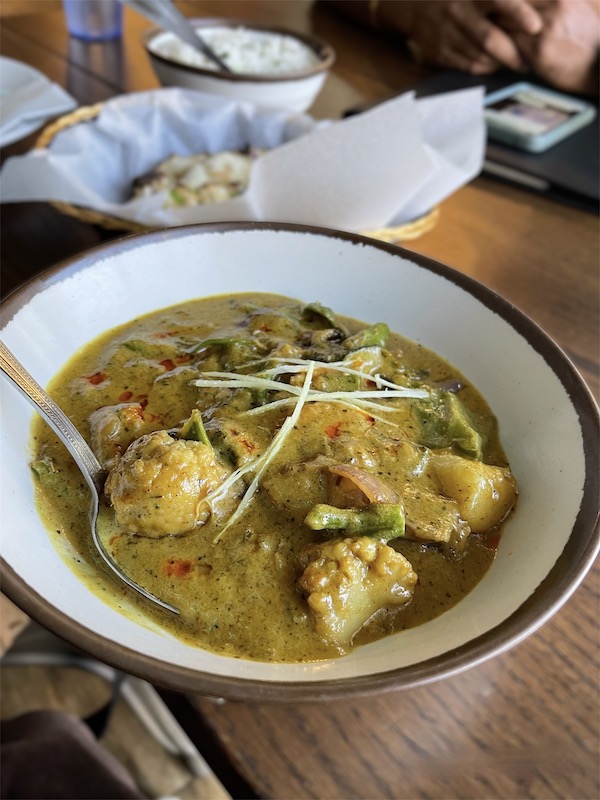
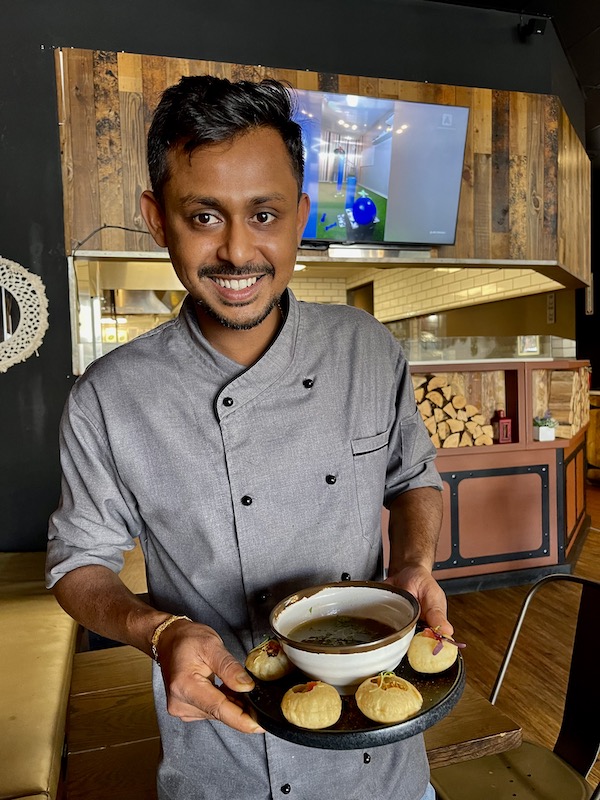

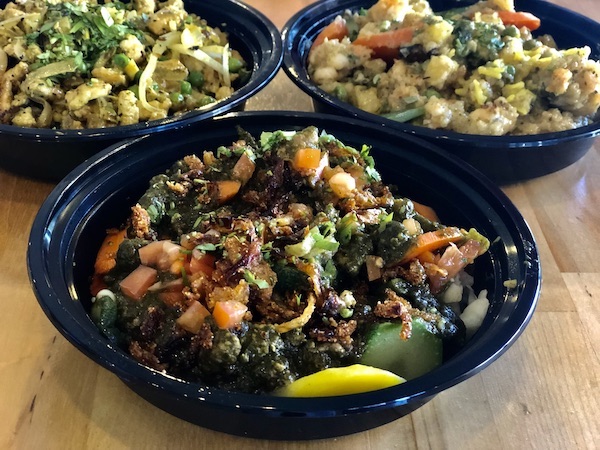


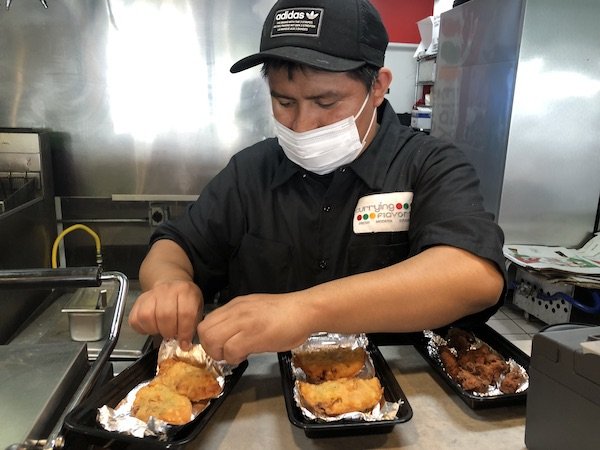


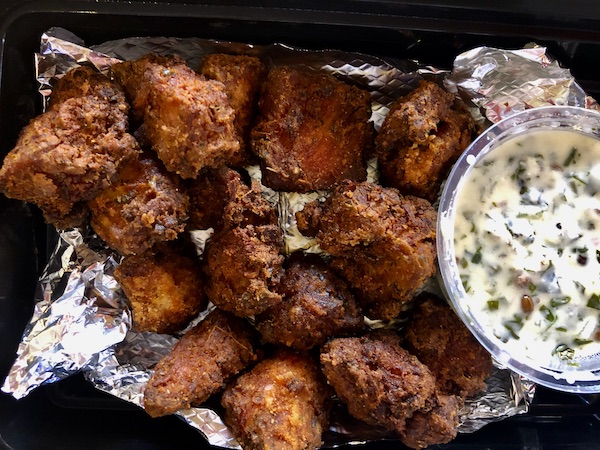
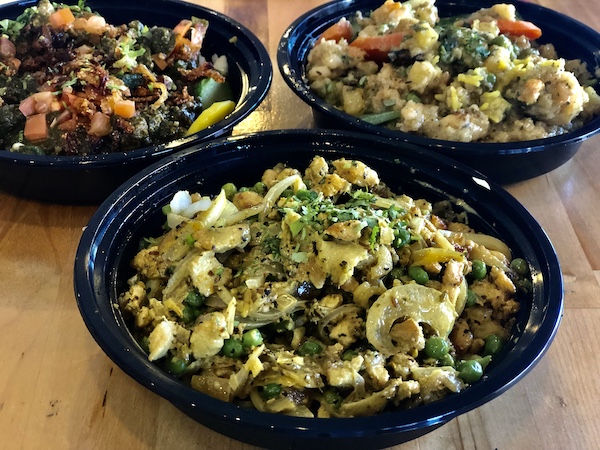
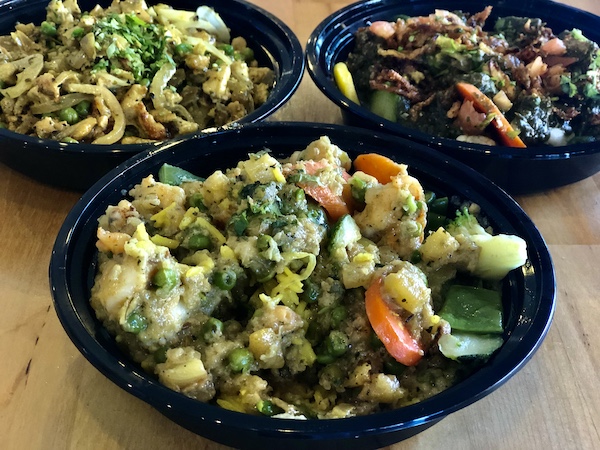
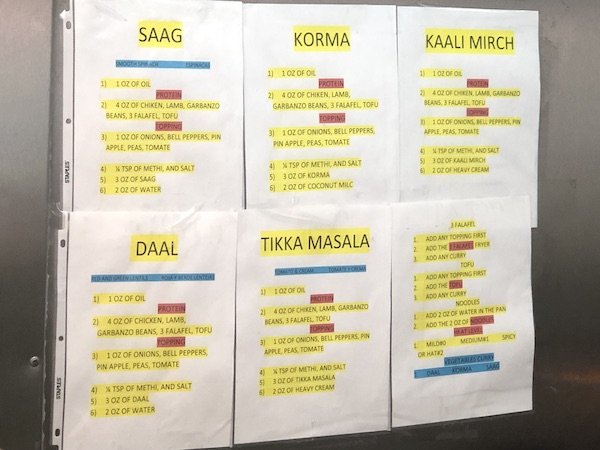
 Gerry Furth-Sides
Gerry Furth-Sides  Barbara Hansen
Barbara Hansen  Chef-owner Alain Cohen
Chef-owner Alain Cohen  Roberta Deen
Roberta Deen  Jose Martinez
Jose Martinez  Nivedita Basu
Nivedita Basu